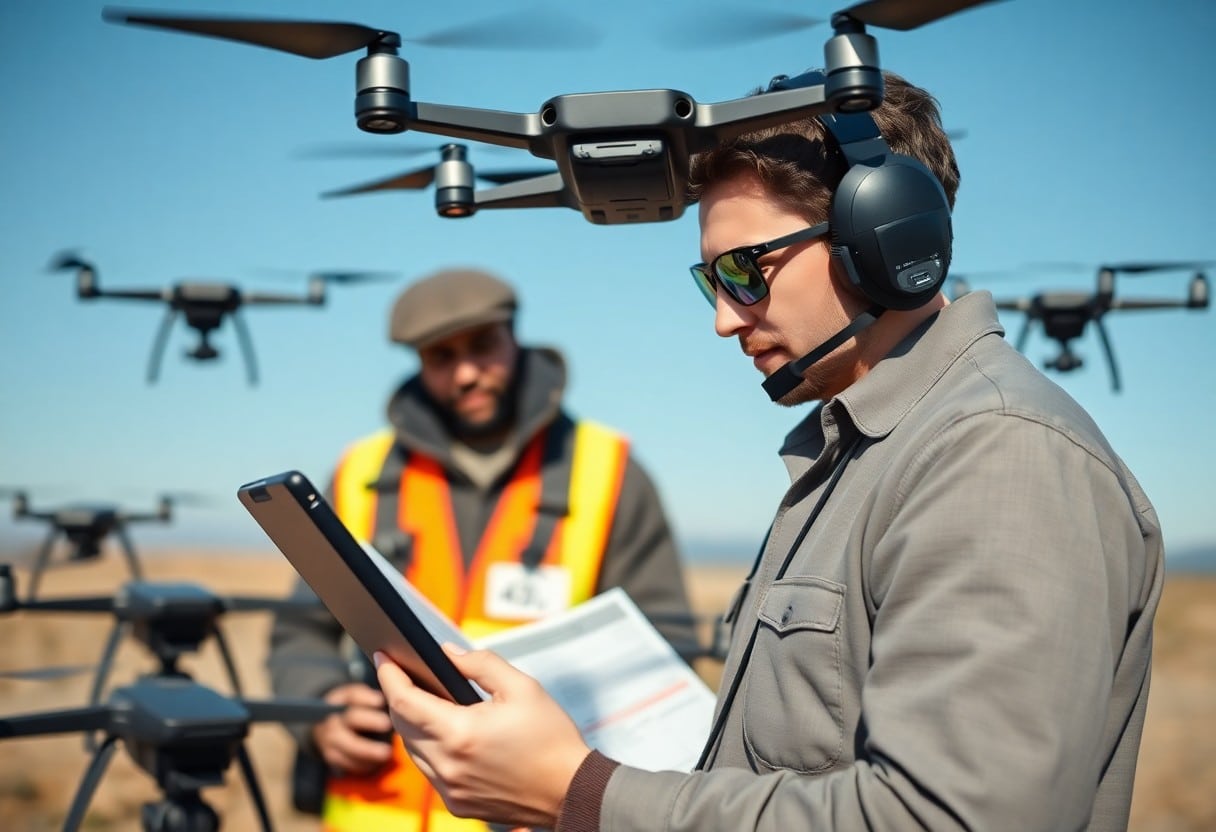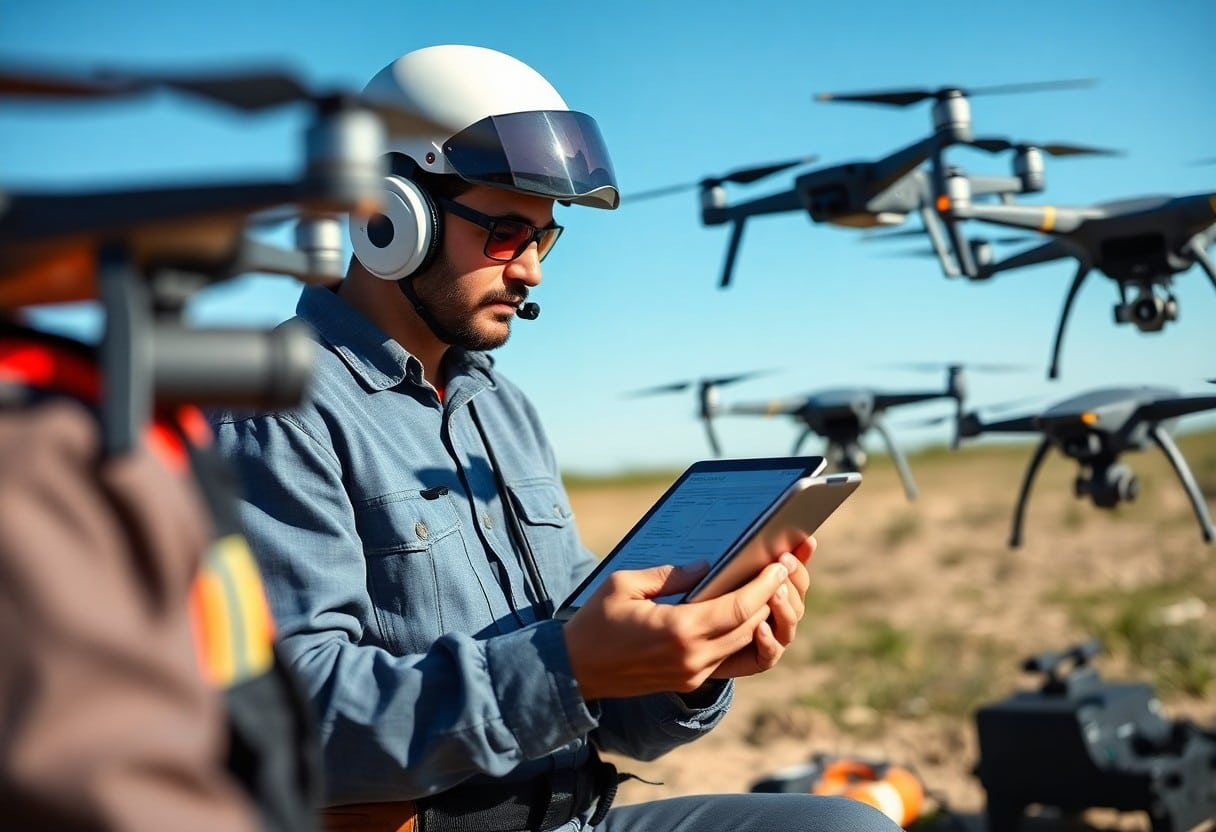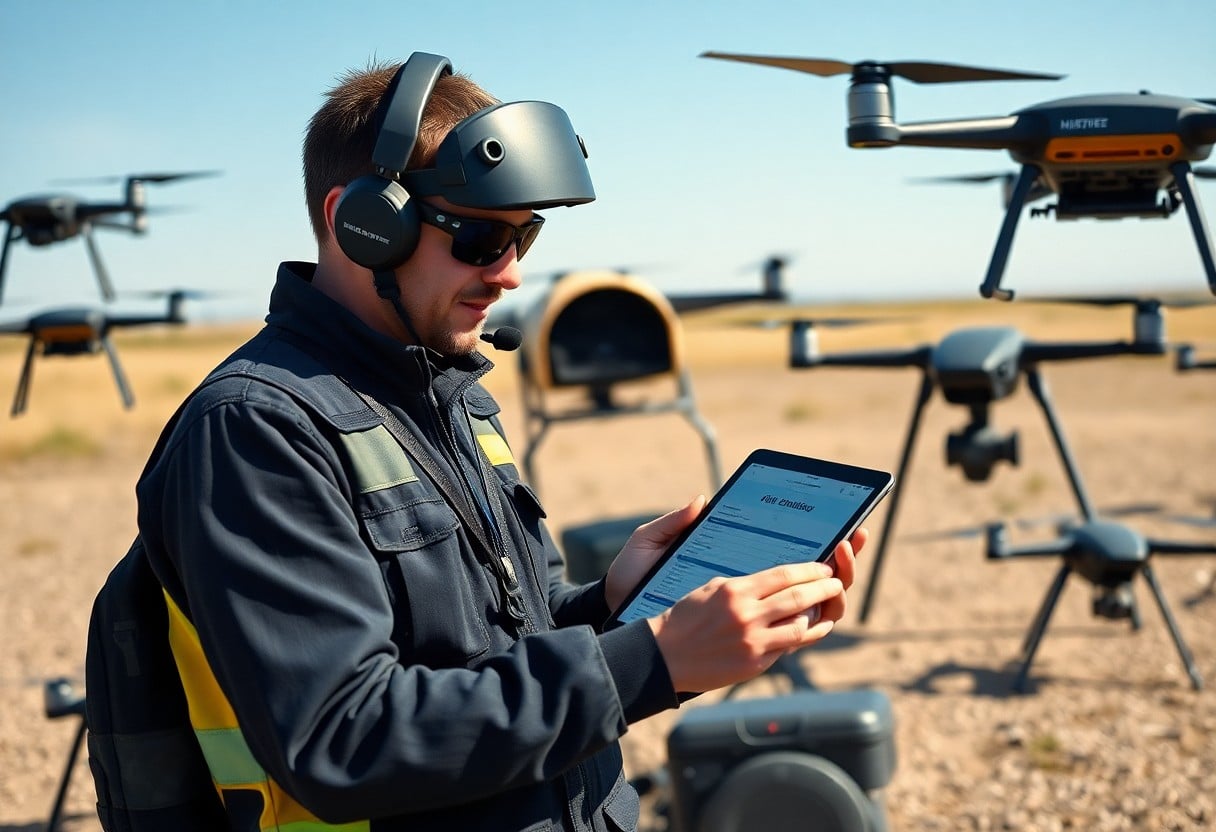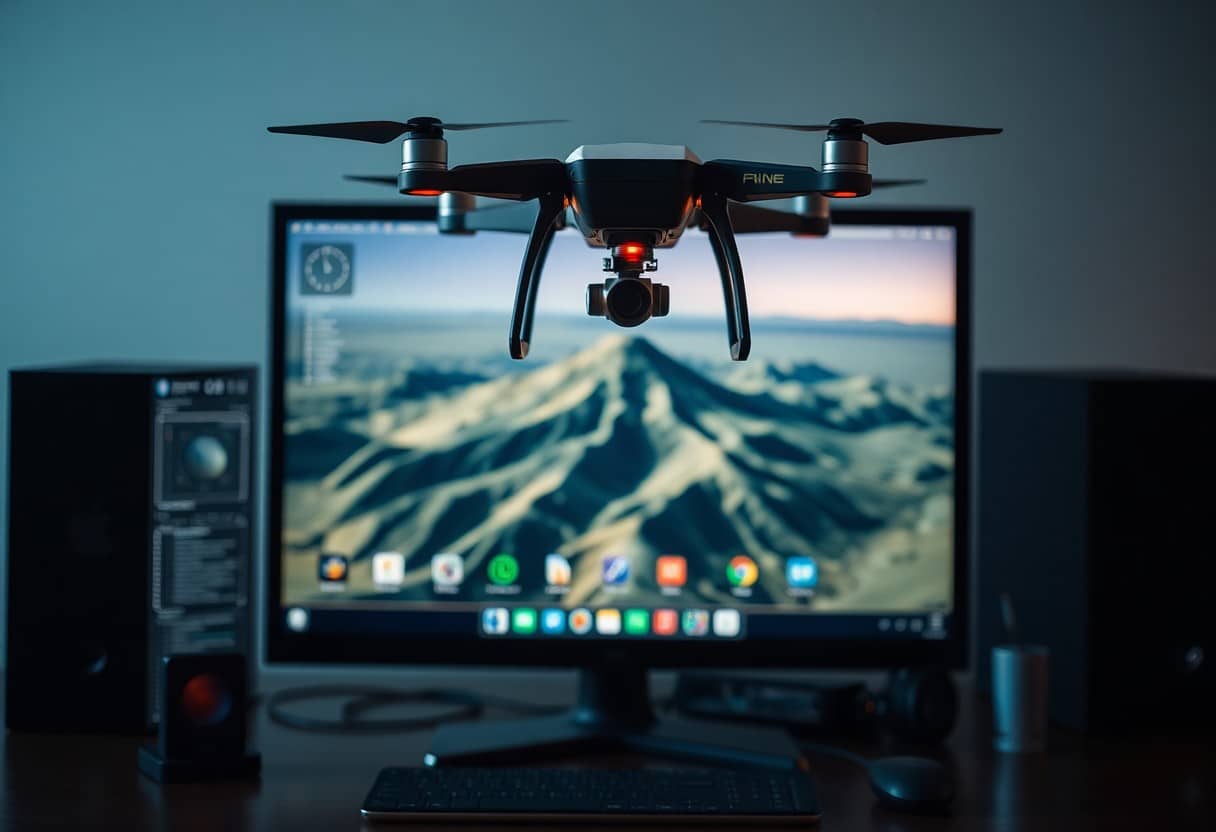Drone Laws - 5 Steps Every Pilot Must Know
As a UAV operator, you must have a thorough understanding of the relevant laws and regulations to ensure that your operations are legal and safe. Failure to comply with drone operating rules may result in fines or legal liability.This article will guide you through the process of completing your flight certificate, which may even affect your eligibility to fly. Therefore, this article will guide you throughFive Key StepsThe steps are designed to help you navigate the drone laws appropriately, increasing your confidence and safety when flying. Whether you are a novice or an experienced pilot, understanding these steps is essential.
Summary of key points:
- Understanding the legal framework: Every UAV pilot should be familiar with local and national UAV laws and regulations.
- Registered Drones: All drones must be registered with the relevant organizations to ensure that they fly legally.
- Obtaining the necessary licenses: Special permits or licenses may be required for drone operation for specific purposes.
- Compliance with flight altitude limits: Understand and follow the legal limits of flying altitude to ensure safety.
- Avoid no-fly zones: Familiarize yourself with no-fly zones and avoid drone operations in sensitive areas.
- Keep-away operation: Keep the drone within visual range during flight operations to avoid accidents.
- Regularly updated knowledgeDrone laws and technology are constantly changing, and it is every pilot's responsibility to keep learning.

Understanding Drone Regulations
Before flying the drone.You need to know the rules and regulations thoroughly.The drone regulations cover everything from registration requirements to airspace restrictions. Drone regulations cover everything from registration requirements to flight area restrictions. These regulations are designed to protect public safety and privacy, and for drone pilots, understanding these regulations is key to ensuring legal operation.
Federal Aviation Administration (FAA) Guidelines
As a drone pilot.You need to follow FAA guidelines.These guidelines include registration, altitude restrictions and choice of flying site. These guidelines include drone registration, altitude restrictions and choice of flying sites. Being aware of these regulations will not only help ensure your safety, but will also prevent you from being fined for not knowing the law.
Local and State Laws
In addition to the FAA's guidance, theYou also need to know your state and local laws.. These laws may vary depending on the specific needs of the area, so make sure that your flight range and usage scenarios are in compliance with local regulations.
For example, some states may be concerned aboutSpecial restrictions on drone flightsFor example, it is prohibited to fly in parks, schools or places where people gather. In addition, some cities may set specific no-fly zones for the use of drones. When operating the droneKnow your local laws firstThe licenses and permits you need to obtain can help you avoid legal disputes and high fines.

Licensing and Certification
Before flying a drone, you need to know about the relevantLicensing and CertificationRequirements. These regulations not only ensure your safety, but also enable you to follow the law and avoid potential fines. Understanding the different types of licenses will give you a good foundation for your development as a drone pilot.
Part 107 Certification
If you plan to use the drone commercially, you must obtain thePart 107 CertificationThis certification requires you to pass an exam to demonstrate your understanding of drone operating rules and safe flight. This certification requires you to pass an exam that demonstrates your understanding of drone operating rules and safe flight. Knowing and following these rules is the key to flying legally.
Entertainment Flyer Requirements
If you are using the drone for recreational purposes only, you will face different requirements. You must followRecreational Pilot RequirementsThis includes registering your drone and following specific flight restrictions. This ensures that your flying activities do not pose a potential danger to others.
Specifically, as a recreational flyer, you need toRegisterDrones also follow the basic rules of not exceeding 400 feet in altitude, keeping your drone in sight, and staying out of populated areas. These restrictions not only helpProtect YourselfIt also ensures public safety. Follow these regulations to make your drone flights safer and more legal.

Type of airspace
When flying a drone, understandType of airspaceThey are important because they determine the rules and restrictions you need to follow. Whether you are an experienced pilot or a beginner, you should be well aware of these categories. For more detailed information, you may refer toWhich software is most effective for drone 3D modeling?
Controlled and uncontrolled airspace
Controlled airspace requires you to follow more restrictions and regulations, and often requires you to stay in contact with ground control. Uncontrolled airspace, on the other hand, is relatively free, where you have more flexibility to operate your drone, but still need to be aware of the safety of other aircraft.
Understanding airspace restrictions
For drone pilots, it's important to knowairspace limitationsThis is important because it may affect your flight plans. Certain areas may be off limits, such as around airports or other sensitive areas. These restrictions are usually set by the Civil Aviation Authority (CAA) or local organizations and are intended toEnsuring air safetyFailure to comply with these restrictions may result in a regulatory violation or even a safety incident. Failure to comply with these restrictions can lead to regulatory violations and even safety incidents, so knowing and following these rules is critical to your flight safety.
Privacy and Liability Issues
When operating a UAV, you must be aware of the followingPrivacyrespond in singingResponsibilityThis is not just about knowing the relevant laws. It's not just about knowing the relevant laws, it's also about respecting other people's private space, making sure you don't infringe on others' rights during your flight, and avoiding legal liabilities that may arise from negligence.
Respecting Privacy
When you fly a drone, always respect the rights of others.PrivacyYou should obtain the necessary permits before filming or videotaping and avoid flying over private property. You should obtain the necessary permits before filming or videotaping and avoid flying over private property to minimize the risk of legal disputes.
Liability Insurance Considerations
ConsiderationLiability Insuranceis very important as accidents can lead to expensive claims. You need to make sure that your insurance policy covers the potential risks during drone operation to protect yourself from legal liability for unexpected accidental injuries or damages.
Have the rightLiability InsuranceNot only does it provide you with financial protection, but it also enhances your professional image when you are in business or enjoying drone activities. This type of insurance can cover accidents caused by improper handling of the drone and help you deal with possible legal claims or damages, allowing you to enjoy the drone flight process while minimizing the risk.
Security Agreements
As a drone pilot, it is important to understand and follow theSecurity Agreementsis key to ensuring your safety and the safety of others. It's not just about complying with the law, it's about making sure your drone is safe to fly, including regularly checking your equipment and being aware of your surroundings. You can refer to this resource:Which 3D design programs offer the most innovative features?
Pre-flight inspection.
Before launching the flight, conductPre-flight inspection.It's important. Make sure your drone's batteries are full, propellers are properly installed, and all of the drone's operating systems are functioning properly. These simple steps can help you avoid surprises.
Emergency Procedures
No matter how careful you are, accidents can happen, so you need to developEmergency ProceduresThis includes strategies for handling loss of signal, safe landing when the battery is depleted, and quick response after a crash. This includes strategies for dealing with loss of signal, safe landing methods when batteries run out, and quick reactions after a crash. A clear response plan will help you stay calm under pressure.
In the event of a drone accident.Rapid ResponseThis is the key. If you experience a loss of signal, immediately activate thereturn modeIf the battery is too low, you should also find a safe landing site as soon as possible to avoid accidental damage. If the battery is low, you should also find a safe landing site as soon as possible to avoid accidental damage. By implementing these emergency procedures, you can effectively reduce the risk of accidents and protect yourself and others.
stay up to date
During drone operations, it is vital to stay up-to-date at all times. Laws and regulations, whether local, national or international, can change at any time. Therefore, you should regularly visit specialized websites and forums to get the most up-to-date information. You may refer to this article13 Pro Steps to Instantly Improve Your Drone Photography Skillsto make sure you are following the correct instructions.
Resources for Continuing Education
Continuing education is key to ensuring your drone operations are safe and compliant. You can take online courses, seminars and forums to keep up with the latest drone laws and technological advances. In addition, you can search for specialized books and resources to gain a deeper understanding of various drone operation techniques and regulations.
Compliance with legislative changes
Drone laws and regulations change frequently, and you need to stay on top of these changes. Through government websites and industry organization announcements, you can get first-hand information about new regulations and policy changes toAvoiding legal problems due to ignoranceThe following are some of the reasons for the change. Staying sensitive to these changes will enable you to fly safely within the law.
It is particularly important that you keep a close eye on any potential impacts on your flight.Local regulations. Some jurisdictions may impose additional restrictions or regulations on drone use, so knowing these specific laws can effectively minimize your operationalRisk mitigation issues. Regularly checking local government announcements or joining relevant community forums will allow you to stay informed and adapt to changes.
Navigating Drone Laws - 5 Steps Every Pilot Must Know
Understanding drone laws is essential for every pilot. You need to familiarize yourself with local regulations, obtain the necessary permits, follow safety guidelines, stay informed about the area you are flying in, and continually update your legal knowledge. By following these five steps, you will not only ensure your legality, but also increase the safety and success of your flights, thus becoming a responsible and respected drone operator.
Frequently Asked Questions
Q: How do I begin to understand the laws surrounding drones?
A: The first step in getting started with drone laws is to familiarize yourself with local regulations and requirements. You can visit the official websites of government and civil aviation authorities to get the latest information on drone laws and registration. In addition, attending local drone communities and seminars is a good way to learn.
Q: What are the steps involved in obtaining a flight authorization for a drone?
A: Obtaining permission to fly a drone usually involves the following steps: first, complete drone registration; second, determine the flight restrictions for your area; then, submit a flight plan or permit application; and finally, follow the day-of-flight inspection procedures to ensure that all equipment is functioning properly.
Q: Where can I fly a drone?
A: Flight areas for drones are usually restricted by law. You need to avoid flying in populated areas, around airports, and other no-fly zones. It is recommended that you use a specialized flight application to view local airspace maps and no-fly zones.
Q: What are the safety regulations for drone flights?
A: Safety regulations for drone flights include, but are not limited to, keeping the drone in sight, limiting flight altitude to no more than the prescribed limit, avoiding overflight of crowds and private property, and complying with local airspace regulations.
Q: Do I need insurance to fly a drone?
A: Although insurance is not legally required for drone flights in some areas, having the proper insurance can protect you from potential liability and financial loss. Therefore, it is recommended that drone operators consider purchasing flight insurance.
Q: How do I stay up-to-date on drone law?
A: To stay up-to-date on the latest drone laws, you can periodically visit the websites of relevant government agencies, subscribe to drone industry newsletters, or join drone operator communities and discussion forums to keep abreast of the latest changes in laws and regulations.
Q: What are the consequences of violating drone laws?
A: Violations of drone laws can result in fines, drone confiscation, and even criminal charges. The exact consequences depend on the nature of the violation and the local laws. Therefore, it is the responsibility of every drone operator to comply with the relevant laws.




